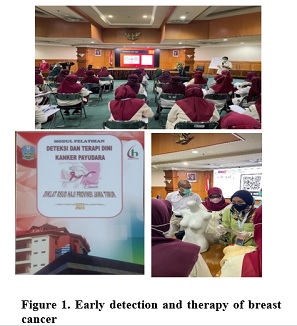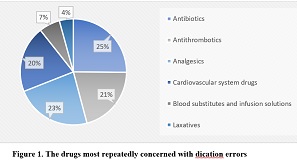Association Between Birth Weight, Birth Length, and Stunting: A Case Analysis at Lempake Public Health Center, East Kalimantan, Indonesia

Stunting remains a significant public health concern in Indonesia, as it affects early childhood growth and development, leading to long-term health and cognitive impairments. Birth length and birth weight are critical predictors of stunting, as inadequate growth parameters at birth may contribute to poor nutritional status and delayed development. Toddlers, particularly those in low-resource settings, are among the most vulnerable age groups to dietary deficiencies, making early identification of risk factors essential for prevention efforts. This study aimed to assess the association between birth weight, birth length, and the incidence of stunting among children at Lempake Community Health Center in Samarinda, Indonesia. A quantitative analytic observational study with a case-control design was conducted to evaluate the relationship between these perinatal factors and stunting risk. The findings revealed that stunting was more prevalent among male infants (51.1%) aged 0–11 months. A statistically significant association was observed between birth weight and stunting (p = 0.00), with an odds ratio of 0.414 (95% CI: 0.23–0.72), indicating that children born with a birth weight of <2500 grams had a higher likelihood of experiencing stunting. Similarly, birth length was significantly associated with stunting (p =0.02), with an odds ratio of 0.264 (95% CI: 0.13–0.50), suggesting that infants with a birth length of <48 cm were at an increased risk. These findings underscore the importance of monitoring birth weight and length as early indicators for stunting prevention strategies in Indonesia.
INTRODUCTION
Toddlers are among the age groups most susceptible to nutritional deficiencies. One of the main concerns of dietary problems in toddlers is stunting, which remains a significant health issue in Indonesia. Addressing stunting globally is one of the objectives of the Sustainable Development Goals (SDGs). Even though it has steadily declined since 2000, we need faster progress, especially in Asia and Africa. Because 52% of children under 5 years old are affected by stunting, and 70% of all children affected by wasting live in Asia11. If current trends continue, an estimated 128.5 million children (19.5%) will be stunted in 2030. Indonesia is one of Asia’s low- and middle-income countries (LMICs), with a stunting proportion of around 26.8%, higher than the global proportion22. Moreover, the prevalence of stunting in East Kalimantan Province in 2021 is 22.8%33. Stunting is defined as a condition of the nutritional status of toddlers with a length or height classified as less than their age. Birth length and weight have the potential as predictors of stunting. Predictors are crucial for prevention, early detection, and getting faster treatment. The pathogenesis underlying growth flattering or linear growth is poorly understood44. Measurements are carried out using child growth standards from WHO, namely with the interpretation of stunting if it is more than minus two median standard deviations. Many factors, such as socioeconomic conditions, maternal nutrition during pregnancy, infant pain, and inadequate nutritional intake in infants, can cause toddler stunting. These contributing factors typically persist over an extended period55.
The causes of stunting include growth retardation in the womb, insufficient nutrient intake during infancy and childhood, frequent exposure to infectious diseases, low birth length, and weight, and inappropriate feeding practices and food consistency for the child’s age.
Children born with low birth weight (LBW) are often the result of insufficient maternal nutrient intake during pregnancy, which inhibits growth and increases susceptibility to infectious diseases66. Moreover, socioeconomic disadvantage, poverty, and food insecurity were widespread problems in LMICs, including Indonesia. It caused higher maternal mortality, low weight gain, and inadequate fetal nutrition77.
The short-term impacts of stunting include increased incidence of morbidity and mortality, suboptimal cognitive, motor, and verbal development in children, and higher health costs. The long-term effects of stunting include a body posture not appropriate for age, increased risk of obesity and other diseases, decreased reproductive health, reduced learning capacity and suboptimal school performance, and lower productivity and work capacity88.
Babies with a history of low birth weight can be affected in their development, as can be seen from anthropometry. Birth weight is usually strongly associated with infant and child morbidity and subsequent growth and development. Birth length is a significant risk factor for stunting in toddlers and is one of the determinants of the delay in growth and development55.
The main objective of this article is to analyze the odds ratio of birth weight and birth length regarding stunting outcomes in children at the Lempake Community Health Center in Samarinda, Indonesia.
MATERIALS AND METHODS
This research is a quantitative analytic observational design with a case-control approach. The population consisted of children aged 0 to 60 months who were recorded in the working area of the Lempake Community Health Center and visited between January 2022 and April 2023, excluding those who did not meet the inclusion criteria, such as incomplete medical records or toddlers with chronic diseases (e.g., tuberculosis, congenital heart disease. The sample for this research was selected using simple random sampling, resulting in 280 children divided into two groups. 1) case group, group that consist of children who stunted, and 2) control group, children who were not stunted. The study included independent variables of gender, age, birth length, and birth weight. The dependent variable was the stunting cases. The data were analysed using the chi-square test. The Spearman Rank was used for the variables of children’s age, while the Pearson correlation was utilized to examine the relationship between birth length, birth weight, and stunting status. Furthermore, logistic regression analysis was performed to identify the most substantial factors associated with stunting, with a significance cutoff set at p<0.05.
The research protocol has been approved by the Medical Research Ethics Committee of Fakultas Kedokteran Universitas Mulawarman (Approval number: 184/KEPK-FK/VII/2023, Date: July 27th, 2023)
RESULTS
Characteristic
| Stunting condition | ||||
|---|---|---|---|---|
| Stunted | Not Stunted | |||
| N | % | N | % | |
| Gender | ||||
Male | 42 | 29.4% | 101 | 70.6% |
Female | 29 | 21.2% | 108 | 78.8% |
| Age (month) | ||||
0 – 11 | 12 | 13.8% | 75 | 86,2% |
12 – 23 | 13 | 23.6% | 42 | 76.4% |
24 – 35 | 25 | 50% | 25 | 50% |
36 – 47 | 19 | 38% | 31 | 62% |
48 – 60 | 2 | 5.3% | 36 | 94.7% |
Total | 71 | 25.4% | 209 | |
Table 1 showed that 143 (51.1%) were male, and 137 (48.9%) were female. Forty-two male toddlers (29.4%) and 29 female toddlers (21.2%) were stunted. Most respondents (n=143, 51.1%) were male, and most (n=87, 31.1%) were aged 0-11 months at the time of measurement. Interestingly, at the age group 24–35 months, the percentages of toddlers stunted and not stunted are equal.
Table 2 showed that the majority of respondents (n=223, 83.2%) had a birth weight >2500 grams, while 16.8% (n=47) had a birth weight ≤2500 grams. Using the chi-square test revealed a significant association between birth weight and stunting (p=0.00), with an odds
UNICEF, WHO & World Bank Group. Levels and Trends in Child WHO, UNICEF 2022 Report. (2023) https://www.who.int/publications/i/item/9789240073791 [accesed : 30 May 2023] .
Black, R. E. Maternal and child undernutrition and overweight in low-income and middle-income countries. The Lancet 382, 427–451 (2013).
Timur, D. K. P. K. Profil Kesehatan 2021 Provinsi Kalimantan Timur [Health Profile of East Kalimantan] . (2022). https://drive.google.com/file/d/1O_flCtIRTBcbmgsJ0nXNn8v5Go3UQ7A3/view?usp=drive_link
Prendergast, A. J. & Humphrey, J. H. The stunting syndrome in developing countries. Paediatr Int Child Health 34, 250–265 (2014). DOI: 10.1179/2046905514Y.0000000158
Supariasa, I. D. N., Bakri, B., Fajar, I., Rezkina, E. & Agustin, C. A. Penilaian Status Gizi [Nutritional Status Assessment.]. (ECG, Jakarta, 2016).
Kusuma, K. E. & Nuryanto, N. Faktor Risiko Kejadian Stunting Pada Anak Usia 2-3 Tahun (Studi di Kecamatan Semarang Timur) [Risk Factors for Stunting Among Children Aged 2–3 Years: A Study in East Semarang District]. Journal of Nutrition College 2, 523–530 (2013). DOI: 10.14710/jnc.v2i4.3735
Perez-Escamilla, R. Nutrition disparities and the global burden of malnutrition. BMJ (Online) 361, (2018). DOI: 10.1136/bmj.k2252
Ministry of Health, Republic of Indonesia. Center for Data and Information, Ministry of Health of the Republic of Indonesia. (2020). https://kemkes.go.id/id/profil-kesehatan-indonesia-2020
Aprilia, D. Perbedaan Risiko Kejadian Stunting Berdasarkan Umur Dan Jenis Kelamin [Comparison of Stunting Risk by Age and Gender]. Jurnal Kebidanan 11, 25–31 (2022). DOI : 10.47560/keb.v11i2.393
Sari, Y., Sutrisna, E. & Yulisa, Y. Faktor-faktor yang Berhubungan dengan Kejadian Stunting pada Balita Usia 25–59 Bulan di Wilayah Kerja Puskesmas Blang Cut Kecamatan Blang Mangat Kota Lhokseumawe [Determinants of Stunting Among Children Aged 25–59 Months in the Blang Cut Health Center Area, Lhokseumawe, Indonesia]. Jurnal Kesehatan Tambusai 4, 6713–6725 (2023). DOI : 10.31004/jkt.v4i4.22103
Awainah, N., Sahabuddin, C. & Soerachmad, Y. Faktor-faktor yang Berhubungan dengan Kejadian Stunting pada Balita Usia 25–59 Bulan di Wilayah Kerja Puskesmas Tutar [Factors Associated With Stunting Among Children Aged 25–59 Months in the Working Area of Tutar Public Health Center]. Journal Peqguruang: Conference Series 5, 49 (2023). DOI: 10.35329/jp.v5i1.3536
Adi Hermawan & Fredy Akbar K. Faktor-Faktor yang Berhubungan dengan Kejadian Stunting pada Balita Usia 25–59 Bulan di Posyandu Wilayah Kerja Puskesmas Wonomulyo Tahun 2021 [Factors Associated With Stunting Among Children Aged 25–59 Months at Integrated Health Posts (Posyandu) in the Working Area of Wonomulyo Public Health Center, 2021]. Media Publikasi Promosi Kesehatan Indonesia (MPPKI) 6, 183–192 (2023). DOI: 10.56338/mppki.v6i1.2990
Sri Sularsih Endartiwi. Faktor-faktor yang mempengaruhi Kejadian Stunting pada Balita di Sendangrejo, Minggir, Sleman Yogyakarta [Factors Influencing Stunting Among Children Under Five in Sendangrejo, Minggir, Sleman, Yogyakarta]. Jurnal Kesmas Untika Luwuk : Public Health Journal 12, 1–10 (2021). DOI: 10.51888/phj.v12i1.58
Ni’mah, K. & Nadhiroh, S. R. Faktor yang Berhubungan dengan Kejadian Stunting pada Balita [Determinants of Stunting Among Children Under Five Years of Age]. Media Gizi Indonesia 10, 13–19 (2016). DOI: 10.20473/mgi.v10i1.13-19
Tsani, A. F. A., Irawati, L. & Dieny, F. F. Pengaruh Faktor Jenis Kelamin dan Status Gizi terhadap Satiety pada Diet Tinggi Lemak [Effects of Sex and Nutritional Status on Satiety Response to a High-Fat Diet]. Journal of Nutrition College 7, 203 (2018). DOI: 10.14710/jnc.v7i4.22281
Halli, S. S., Biradar, R. A. & Prasad, J. B. Low Birth Weight, the Differentiating Risk Factor for Stunting among Preschool Children in India. Int J Environ Res Public Health 19, 3751 (2022). DOI: 10.3390/ijerph19073751
Podungge, Y. et al. Determinant factors of stunting in under-five children. Open Access Maced J Med Sci 9, 1717–1726 (2021). DOI: 10.3889/oamjms.2021.6638
Nur, T. et al. Birth Weight and Length Associated with Stunting among Children Under-Five in Indonesia. J. Gizi Pangan 16 No Supp1, 99–108 (2021). https://journal.ipb.ac.id/index.php/jgizipangan/issue/view/2809/Birth%20Weight%20and%20Length%20Associated%20with%20Stunting%20among%20Children%20under-Five%20in%20Indonesia
Mulyaningsih, T. et al. Beyond personal factors: Multilevel determinants of childhood stunting in Indonesia. PLoS One 16, e0260265 (2021). DOI: 10.1371/journal.pone.0260265
Meilyasari, F. & Isnawati, M. Faktor Risiko Kejadian Stunting pada Balita Usia 12 Bulan di Desa Purwokerto, Kecamatan Patebon, Kabupaten Kendal [Risk Factors Associated With Stunting Among 12-Month-Old Infants in Purwokerto Village, Patebon District, Kendal, Indonesia]. Journal of Nutrition College 3, 303–309 (2014). DOI: 10.14710/jnc.v3i2.5437
Hidayati, A. N., Aprianto, B. & Herbawani, C. K. Analysis of Birth Weight and Birth Length with Stunting Incident in Children Aged 0-59 Months in Cinangka Depok. Poltekita : Jurnal Ilmu Kesehatan 16, 139–143 (2022). DOI : 10.33860/jik.v16i2.1208
Rahmadi A. Hubungan Berat Badan Dan Panjang Badan Lahir Dengan Kejadian Stunting Anak 12-59 Bulan Di Provinsi Lampung [The Relationship Between Birth Weight and Birth Length with the Incidence of Stunting Among Children Aged 12–59 Months in Lampung Province]. Jurnal Ilmiah Keperawatan Sai Betik 2016; 12: 209–218. https://www.ejurnal.poltekkes-tjk.ac.id/index.php/JKM/article/view/1750
Kementerian Koordinator Bidang Kesejahteraan Rakyat. Kerangka Kebijakan Gerakan Sadar Gizi Dalam Rangka Seribu Hari Pertama Kehidupan (1000 HPK) [Policy Framework of the Nutrition Awareness Movement Within the First 1,000 Days of Life (1000 HPK)]. Jakarta, 2013. https://perpustakaan.bappenas.go.id/e-library/file_upload/koleksi/migrasi-data-publikasi/file/Unit_Kerja/Deputi_Bidang_Pembangunan_Manusia_Masyarakat_dan_Kebudayaan/Direktorat-Kesehatan-dan-Gizi-Masyarakat/Gerakan-Nasional-Percepatan-Perbaikan-Gizi/PEDOMAN%20PERENCANAAN%20PROGRAM%20GERAKAN%20NASIONAL%20PERCEPATAN%20PERBAIKAN%20GIZI.pdf
Arrasyi Ss. Panjang Badan Lahir Dan Asi Eksklusif Balita Usia 6-36 Bulan Stunting Dan Non Stunting Di Desa Bolon Kecamatan Colomadu (Studi Prevalensi)[Birth Length and Exclusive Breastfeeding in Stunted and Non-Stunted Children Aged 6–36 Months in Bolon Village, Colomadu Subdistrict (A Prevalence Study)] . Universitas Muhammadiyah Surakarta, 2021. https://eprints.ums.ac.id/96535/11/Naskah%20Publikasi.pdf
Teja M. Stunting Balita Indonesia Dan Penaggulangannya [Stunting Among Indonesian Toddlers and Its Prevention Strategies]. Jakarta, 2019. https://berkas.dpr.go.id/pusaka/files/info_singkat/Info%20Singkat-XI-22-II-P3DI-November-2019-242.pdf
Qar Bhutta Za, Ahmed T, Black Re, Et Al. Maternal And Child Undernutrition 3 What Works? Interventions For Maternal And Child Undernutrition And Survival. Www.Thelancet.Com; 371. Epub Ahead Of Print 2008. DOI: 10.1016/s0140-6736(07)61693-6
Paramashanti Ba, Hadi H, Gunawan Ima. Pemberian Asi Eksklusif Tidak Berhubungan Dengan Stunting Pada Anak Usia 6–23 Bulan Di Indonesia. Jurnal Gizi Dan Dietetik Indonesia (Indonesian Journal Of Nutrition And Dietetics) [Exclusive breastfeeding practice was not related with stunting in young children 6–23 months in Indonesia] 2016; 3: 162. https://ejournal.almaata.ac.id/index.php/IJND/article/view/312
Copyright (c) 2025 Hanis Kusumawati Rahayu; Abdu Nafan Aisul Muhlis, Rahmat Bakhtiar; Ramadhani Hengki Wijaya, M. Fachrian Akbar, Sya'idah Alawiah Dzakwan, Imam Fathur Rozi, Alief Fikri Rusdi

This work is licensed under a Creative Commons Attribution-ShareAlike 4.0 International License.
- The journal allows the author to hold the copyright of the article without restrictions.
- The journal allows the author(s) to retain publishing rights without restrictions.
- The legal formal aspect of journal publication accessibility refers to Creative Commons Attribution Share-Alike (CC BY-SA).
- The Creative Commons Attribution Share-Alike (CC BY-SA) license allows re-distribution and re-use of a licensed work on the conditions that the creator is appropriately credited and that any derivative work is made available under "the same, similar or a compatible license”. Other than the conditions mentioned above, the editorial board is not responsible for copyright violation.































